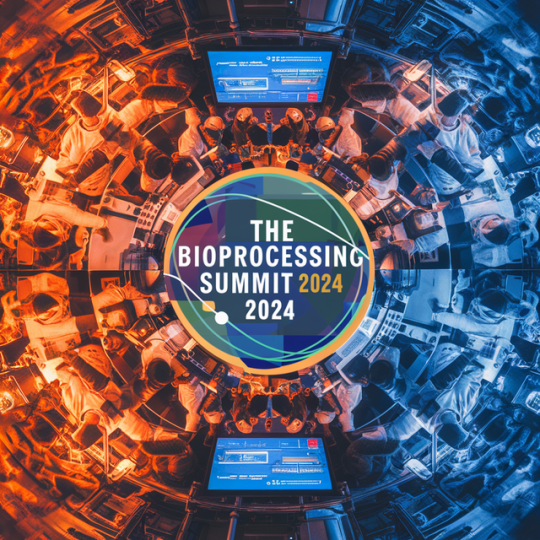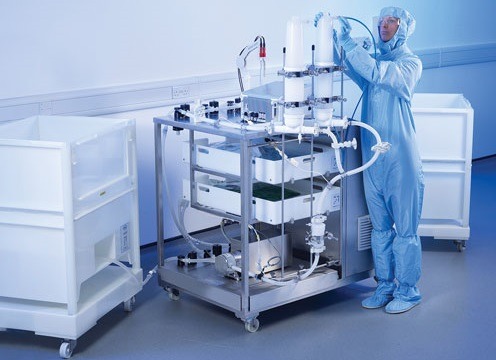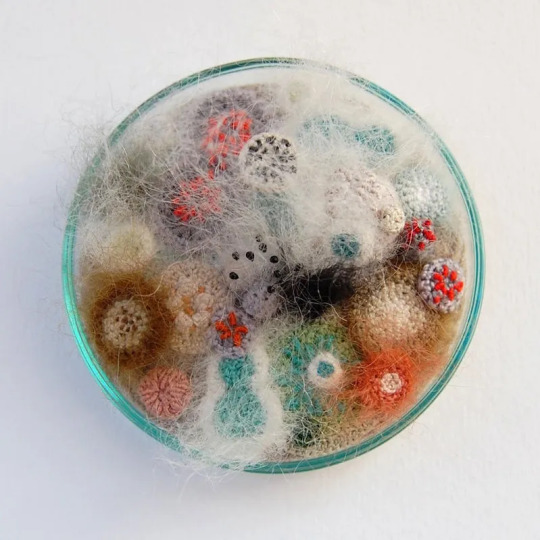#BioProduction
Explore tagged Tumblr posts
Video
youtube
Sorry Bacteria -- sorry Antimicrobial Resistance, AMR, --- Belgium's André Gratia bacteriocins are back. 1925-2025. AS2AMR&BIC2025 conference May 2025 Royal Academy of Medicine of Belgium, Brussels. Jean-Pierre Gratia 1934- honors his father 1893-1950.
#youtube#disease#hospital#sanitation#antibiotics#belgium#laboratory#microbiology#fermentation#bioproduction#genetics#resistance#bacteria#virus#mold#infection control#infection#microscope#medicine#phage#cancer#anthrax#pasteurization#rockefeller#liege#brussels#amr
0 notes
Text

The Bioprocessing Summit 2024 https://expopeak.com/event/the-bioprocessing-summit-2024/
#Accelerating#Analytical#Bioprocessing#And#Bioengineering#Equipment#Materials#Services#bioprocessing#regulatory#BioProduction#Scale#Bioreactors#Disposals#Opt#Cell#Line#Culture#Therapy#CMC#Analytics#Manufacturing#Continuous#Processing#Digital#Transformation#AI#Venture#Downstream#Process
0 notes
Text
Single-Use Bioprocessing Market in the Quest for Efficient Biopharmaceutical Production
The global single-use bioprocessing market size is projected to reach USD 80.13 million by 2030, registering a compound annual growth rate (CAGR) of 16.24% over the forecast period, according to a new report by Grand View Research, Inc. The demand for single-use bioprocessing offerings is driven by the commercial advantages offered, including a reduction in costs and time required for bioprocessing operations. Originally used for monoclonal antibody production, single-use technologies are also gaining traction for cell and gene therapy manufacturing. As a result, broadening the scope of applications in biomanufacturing operations is likely to drive industry growth.

Single-use Bioprocessing Market Report Highlights
The simple & peripheral elements segment held the largest share in 2023 due to the significant adoption of these products as a result of a variety of customizable options available for bioprocessing applications
The upstream bioprocessing workflow segment accounted for the largest share in 2023. Continuous developments and betterment in technologies for upstream bioprocessing are driving the segment growth
North America was the leading region in 2023 due to the high R&D spending and growth of the biopharmaceutical manufacturing sector in the region
Furthermore, the presence of key players, such as Thermo Fisher Scientific, Inc. and Danaher Corp., is driving the regional market
The biopharmaceutical manufacturers end-use segment dominated the industry in 2023 and accounted for the maximum revenue share. This was due to the high demand for biologics and heavy investments in cell & gene therapy manufacturing
For More Details or Sample Copy please visit link @: Single-use Bioprocessing Market Report
Furthermore, strategic initiatives from key players are expanding the industry's growth prospects. For instance, in July 2021, Cytiva and Pall Corp. announced investment plans for capacity expansion over two years. Among other key products, more than USD 300 million were invested in single-use technologies, such as bioreactor bags for cell expansion, used to make personalized therapies and syringe filters for scientific research. Similarly, the growing adoption of single-use equipment for in-house and contract manufacturing has opened new avenues for the flow of investments in this space. The industry is witnessing significant advancements in several product portfolios, including disposable probes and sensors, stirring systems, bioreactor designs, and filtration technologies, which are expected to contribute to strong revenue growth.
The benefits offered by single-use bioprocessing systems have enabled biopharmaceutical manufacturers to offer their products faster to the market by introducing multi-product facilities, entering into partnerships, or outsourcing pipeline products for contract development and manufacturing. For instance, in January 2021, Sartorius AG partnered with RoosterBio, a leading supplier of human Mesenchymal Stem/Stromal Cells (hMSC). This collaboration aimed at advancing cell & gene therapy manufacturing by leveraging the single-use manufacturing technologies from Sartorius AG. The COVID-19 pandemic has generated new growth opportunities for key stakeholders in the industry.
#Single-Use Bioprocessing#Biomanufacturing#Bioprocessing Technology#Biopharmaceuticals#Disposable Technology#Sustainable Bioprocessing#Flexible Manufacturing#Bioproduction#BioProcess Containers#Bioreactors#Downstream Processing
0 notes
Text
Researchers at the Center for Advanced Bioenergy and Bioproducts Innovation (CABBI) have achieved a significant breakthrough that could lead to better—and greener—agricultural chemicals and everyday products. Using a process that combines natural enzymes and light, the team from the University of Illinois Urbana-Champaign developed an eco-friendly way to precisely mix fluorine, an important additive, into chemicals called olefins—hydrocarbons used in a vast array of products, from detergents to fuels to medicines. This groundbreaking method offers an efficient new strategy for creating high-value chemicals with potential applications in agrochemicals, pharmaceuticals, renewable fuels, and more.
Continue Reading.
#Science#Chemistry#Materials Science#Fluorine#Center for Advanced Bioenergy and Bioproducts Innovation#CABBI
209 notes
·
View notes
Text
SciTech Chronicles. . . . . . . . .April 1st, 2025
#bioproducts#waste#polyhydroxyalkanoates#3D-Printing#Bellingshausen#A-84#seafloor#sediment#PEDOT:PSS#crosslinker#ions#bioelectronic#polyfluoroalkyl#graphene#FJH#GAC#renewables#topology#forecasting#spatio-temporal
0 notes
Text

TSRNOSS, p 712.
#DNA repair#enzymes#DNA polymerase#cheetah#AIDS#Kleiber's law#genetic bottleneck#extinction#cortisol levels#environmental stresses#bioproductivity#Russia
0 notes
Video
youtube
manufacturer of industrial fermenter bioreactor for biotech and biopharmaceuticals industries
#youtube#IndustrialFermenter Bioproduction FermenterWorking Biotechnology FermentationProcess BioreactorTechnology Bioengineering FermenterDesign Bio
0 notes
Text

https://agtcbioproducts.com/ AGTC Bioproducts a Gentaur brand sell lab reagents for cell culture an biotech research.
0 notes
Text
The partners of the EU B-Ferst project visiting the Novamont Research Center in Piana di Monte Verna
On 6 and 7 July, the partners of B-FERST, a project financed by Bio Based Industries Join Undertaking (now CBE JU) under the Horizon 2020 program, met in Caserta to discuss developments in project activities and define the following actions to be undertaken. Continue reading Untitled

View On WordPress
0 notes
Text
SONIC MOVIE 3 SPOILERS
.
.
.

Okay so, I genuinely loved the movie and im gonna watch it again soon but chat... chat listen...
I'm so chronically insane that the idea of shadow surviving and Stone being the one to find him and try his best to help this 50 + year old kid whilst dealing with heartbreak and loss from eggman being gone? HOOH BOY. them relating on the loss of a robotnik (maris robotnik cough) and being the last kind of like, bioproduct of a robotnik?
Aka shadow being made by a robotnik so he's shadow robotnik and Stone staying by Ivo's side and practically being his wife yada yada
So im just, living for this found family and them living together as the last robotniks not by blood but from love from their family.
So.. yeah I might have some brain worms. I might make some more of them and I've got some form of story plot- like Stone trying his best to raise this alien kid but not knowing wtf to do (especially if shadow has nightmares and is eating straight coffee beans and refusing to sleep) he's dealing with his own loss and also hiding from gun given both he and shadow would definitely be wanted still.
Id like to think eventually, begrudgingly not because he wants to but has to because he would have no clue wtf he is doing, he would eventually find the wachowskis for help

#sonic#sonic the hedgehog fanart#shadow the hedgehog#agent stone#the sonic movie#sonic movie#sonic art#sonic movie 3#sonic movie spoilers#sonic movie 3 spoilers#i live for found family guys#like as a pretty ace kind of person i adore found family#my art#digital art#capmin art
124 notes
·
View notes
Text
"A global shift to a mostly plant-based “flexitarian” diet could reduce greenhouse gas emissions and help restrict global heating to 1.5C, a new study shows.
Previous research has warned how emissions from food alone at current rates will propel the world past this key international target.
But the new research, published in the Science Advances journal, shows how that could be prevented by widespread adoption of a flexitarian diet based around reducing meat consumption and adding more plant-based food.
“A shift toward healthy diets would not only benefit the people, the land and food systems,” said Florian Humpenöder, a study author and senior scientist at the Potsdam Institute for Climate Impact Research, “but also would have an impact on the total economy in terms of how fast emissions need to be reduced.” ...
The researchers found that adopting a flexitarian diet could lower methane and nitrous oxide emissions from agriculture and lower the impacts of food production on water, nitrogen and biodiversity. This in turn could reduce the economic costs related to human health and ecosystem degradation and cut GHG emissions pricing, or what it costs to mitigate carbon, by 43% in 2050.
The dietary shift models also show limiting peak warming to about 1.5C can be achieved by 2045 with less carbon dioxide removal, compared with if we maintain our current diets.
“It’s important to stress that flexitarian is not vegetarian and not vegan,” Humpenöder says. “It’s less livestock products, especially in high-income regions, and the diet is based on what would be the best diet for human health.”
In the US, agriculture accounts for more than 10% of total GHG emissions. Most of it comes from livestock. Reducing meat consumption can free up agricultural land used for livestock production, which in turn can lower methane emissions. A potent greenhouse gas, methane is mainly expelled from cows and other animals raised for livestock. Animal production is the primary contributor to air quality-related health impacts from US food systems.
“This paper further confirms what other studies have shown, which is that if we change our diets to a more flexitarian type, we can greatly reduce greenhouse gas emissions,” said Jason Hill, a professor in the University of Minnesota’s department of bioproducts and biosystems engineering.
According to the study authors, one way to achieve a shift toward healthier diets is through price-based incentives, such as putting taxes on the highest-emitting animal products, including beef and lamb. Another option is informing consumers about environmental consequences of high meat consumption."
-via The Guardian, March 27, 2024
#flexitarian#vegetarian#vegan#environment#environmental news#agriculture#big agriculture#beef#methane#air pollution#greenhouse gasses#carbon emissions#1.5 degrees#climate action#climate hope#good news#hope#food#food systems
250 notes
·
View notes
Text
The Bioprocessing Summit 2024
Unleash Bioprocessing Innovation at The Bioprocessing Summit 2024
Discover the future of biopharmaceutical manufacturing at The Bioprocessing Summit 2024. Find event details and more on ExpoPeak.
#Accelerating#Analytical#Bioprocessing#And#Bioengineering#Equipment#Materials#Services#bioprocessing#regulatory#BioProduction#Scale#Bioreactors#Disposals#Opt#Cell#Line#Culture#Therapy#CMC#Analytics#Manufacturing#Continuous#Processing#Digital#Transformation#AI#Venture#Downstream#Process
0 notes
Text
Could plants be the answer to the looming threat of microplastic pollution? Scientists at UBC's BioProducts Institute found that if you add tannins—natural plant compounds that make your mouth pucker if you bite into an unripe fruit—to a layer of wood dust, you can create a filter that traps virtually all microplastic particles present in water. While the experiment remains a lab set-up at this stage, the team is convinced that the solution can be scaled up easily and inexpensively once they find the right industry partner.
Continue Reading.
1K notes
·
View notes
Text
The Pentagon is funding alternatives to meat protein, which includes using fungi for food for U.S. service members as part of the White House’s sustainable bioeconomy agenda.
The Department of Defense is focusing on investments into fungi protein as an alternative to animal protein, after initially seeking to fund lab-grown meat earlier this year in an effort to reduce carbon emissions. Critics have pushed back on such initiatives, arguing that they are negatively affecting the military.
In November, the DOD announced that it had given 34 awards totaling over $60 million to bioindustrial firms under the Distributed Bioindustrial Manufacturing Program (DBIMP). $1.38 million was given to The Fynder Group “to plan a bioproduction facility for fungi-based proteins that can be incorporated into military ready-to-eat meals.”
The program is part of President Joe Biden's Executive Order 14081, "Advancing Biotechnology and Biomanufacturing Innovation for a Sustainable, Safe, and Secure American Bioeconomy," which is “aimed at bolstering America's bioeconomic strengths while helping the Department achieve advanced defense capabilities,” according to the DOD.
The projects that were awarded funding from the DOD program “will be eligible to receive follow-on ‘build’ awards providing access to up to $100 million to construct U.S.-based bioindustrial manufacturing facilities,” the DOD announcement added.
39 notes
·
View notes
Text
Scientists at Washington State University have found a new way to produce sugar from corn stalks and other crop waste, potentially opening a new pathway to sustainable biofuels. Newly published in Bioresource Technology, their experimental process used ammonium sulfite-based alkali salts to convert corn stover -- leftover corn stalks, husks, and other residues -- into low-cost sugar for production of biofuels and bioproducts, making the process more economically feasible. "Inexpensive sugar is the key to commercial success for new technologies that make fuels and useful products from renewable biomass," said Bin Yang, professor at WSU's Department of Biological Systems Engineering and a lead investigator on the study.
Read more.
#Materials Science#Science#Biomaterials#Sugar#Waste#Plants#Materials processing#Washington State University
18 notes
·
View notes
Text


he Biden Administration’s Department of Defense (DOD) has been spending money on alternatives to meat in its military meals, including fake protein made from fungus.
According to Just The News, this funding is part of a broader “sustainability” agenda promoted by far-left activists who believe in global warming, and thus demand the consumption of less meat in order to reduce carbon emissions. The DOD had previously invested in lab-grown “meat” earlier in 2024 before shifting to the current investment in “protein” made from fungi.
The DOD announced in November that it had awarded $60 million across 34 different grants to various bioindustrial firms as part of the Distributed Bioindustrial Manufacturing Program (DBIMP).
One of these grants, worth $1.38 million, was awarded to The Fynder Group in order “to plan a bioproduction facility for fungi-based proteins that can be incorporated into military ready-to-eat meals.” Another one worth $1.5 million was given to The Better Meat Company, which specializes in allegedly “harnessing the amazing power of fermentation to make delicious, clean mycoprotein ingredients for food companies to use as the basis of their hybrid and fully animal-free meats.”
In order to produce this so-called “protein,” the company says that they “feed starchy foods to microscopic fungi and allow them to naturally turn into the meatiest animal-free protein on the planet.”
However, some of these grants may have simply been awarded as political favors. Paul Shapiro, the CEO of The Better Meat Company, is a frequent donor to the Democratic Party. He most recently donated to Congressman Adam Schiff’s successful Senate campaign in October and November of 2023, as well as the primary campaign of Virginia State Delegate Dan Helmer for Virginia’s 10th congressional district.
This spending was enacted in Executive Order 14081, signed by Joe Biden, which is officially titled “Advancing Biotechnology and Biomanufacturing Innovation for a Sustainable, Safe, and Secure American Bioeconomy.” The order is “aimed at bolstering America’s bioeconomic strengths while helping the Department achieve advanced defense capabilities.”
Republican efforts to block the DOD from any future spending on such anti-meat alternatives have been unsuccessful. In June, Congressman Don Bacon (R-Neb.) introduced an amendment to the National Defense Authorization Act (NDAA) that would have forbid the DOD from funding lab-grown “meat.” But the amendment was ultimately rejected in Congress.
The program is one of many left-wing priorities of the DOD under Biden that is likely to be undone by the incoming second Trump Administration.

"This is how we intend to treat future soldiers? You think it's hard to get men to volunteer now? Wait till the start feeding them the bugs and fungus that grows on trash bins."
--KD
4 notes
·
View notes